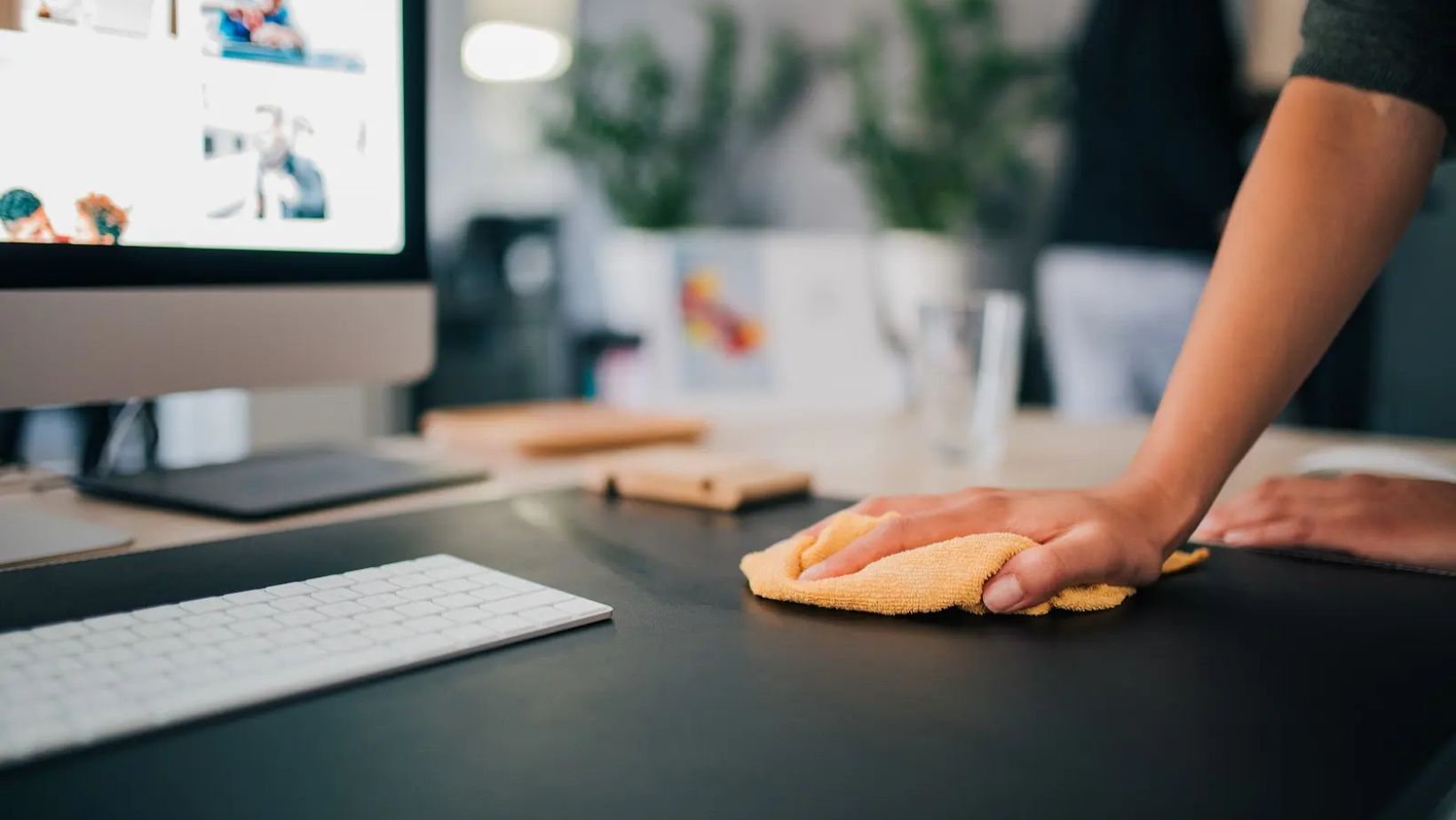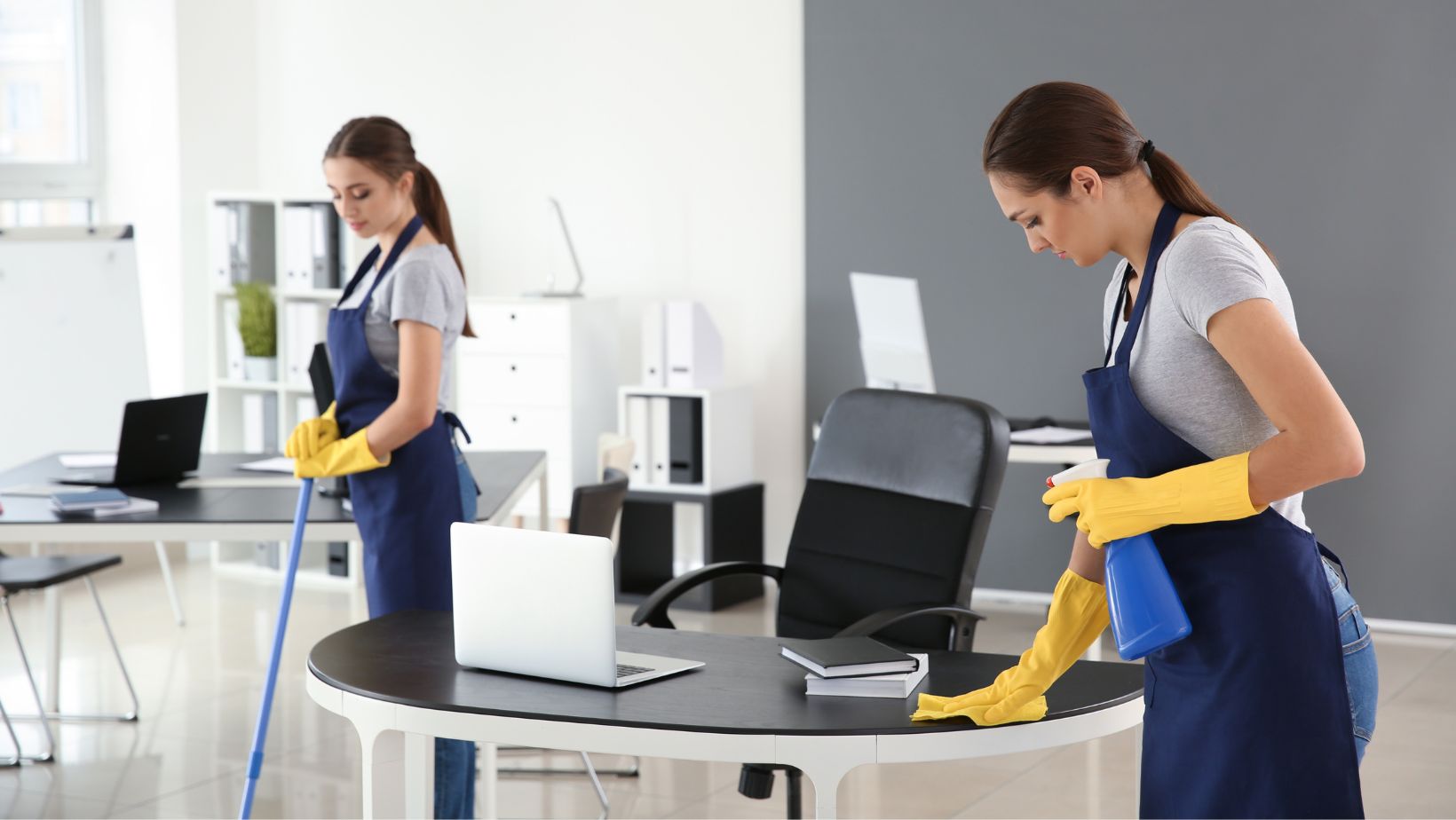Have you ever noticed how a cluttered desk seems to clutter your mind, too? Your workspaces are more than just places where you type away at keyboards and shuffle through papers. They’re where you spend countless hours breathing, thinking, and creating. A clean office can impact your well-being, productivity, and, yes, even your mood during those long Monday meetings.
While traditional cleaning methods get the job done, there’s a whole world of smart, efficient ways to keep your workplace sanctuaries fresh and healthy without spending hours scrubbing away.
From desk organization secrets to air quality boosters that take minimal effort, these practical cleaning hacks will revolutionize how you maintain your workspace.
Start With a Decluttering Strategy
Before you start deep cleaning, tackle clutter. Papers, unused supplies, and random items scattered across desks or floors make cleaning harder and create hiding spots for dust. Encourage everyone to sort their workspaces into three categories: keep, recycle, and discard. Use labeled bins for each category to streamline the process. Store frequently used items in accessible drawers or shelves, and archive older documents digitally to free up physical space. A clutter-free office not only looks cleaner but also reduces stress and improves focus.
Deep Clean Hidden Areas Regularly
Some spots get overlooked in routine cleaning. Schedule monthly deep-cleaning sessions for vents, baseboards, and ceiling fans. Dust buildup here can circulate allergens and affect air quality. Use a long-handled duster or a vacuum attachment to reach high spots. Wipe down window blinds with a microfiber cloth dampened with water.
If you’re dealing with hard-to-reach areas or particularly stubborn buildup, consider professional assistance. Many businesses find that partnering with an office cleaning service Fort Worth or other professional janitorial services in your local area ensures these challenging spots get the thorough attention they need.
Focus on High-Touch Surfaces
Doorknobs, light switches, elevator buttons, and shared printers are hotspots for germs. Disinfect these areas at least twice daily using a multipurpose cleaner or a mix of water and vinegar. For keyboards and mice, use compressed air and a lightly dampened cloth to remove crumbs (avoid excess moisture).

Don’t overlook the breakroom—clean the microwave handle, fridge door, and coffee machine buttons just as diligently. Rotating these tasks among team members fosters shared responsibility.
Establish Daily Micro-Cleaning Habits
Instead of waiting for dirt to accumulate, adopt small daily routines to achieve cleanliness consistently. Wipe down desks, phones, and keyboards with disinfectant wipes at the end of each day. Keep a small trash bin at every desk to prevent waste from piling up. Assign a five-minute “cleanup window” before closing time for teams to tidy their areas. These micro-habits prevent messes from becoming overwhelming and ensure germs don’t linger on high-touch surfaces.
Optimize Floor Care
Carpets and floors trap dirt, allergens, and bacteria. Place high-quality doormats at every entrance to reduce outside debris. Vacuum carpets at least twice a week, focusing on high-traffic zones. For hard floors, sweep daily and mop with a gentle cleaner weekly. If your office has rugs, shake them outside monthly to remove embedded dust. Pro tip: Use baking soda on carpets before vacuuming to neutralize odors.
Tackle Odors Naturally
Persistent smells in kitchens, restrooms, or trash bins can make an office feel uninviting. Avoid masking odors with synthetic air fresheners—they often worsen air quality. Instead, place bowls of baking soda in problem areas to absorb smells. Simmer citrus peels (like lemon or orange) with water and cinnamon sticks on the stove for a fresh, natural fragrance. Empty trash cans daily and line them with newspaper to soak up leaks and minimize odors.
Refresh Restrooms Strategically
Restrooms require special attention to maintain hygiene. Place a trash bin near the door so paper towels don’t end up on the floor. Use disposable seat covers or provide disinfectant spray for users to wipe seats before and after use. Clean mirrors and sinks daily, and scrub toilets with a dedicated brush to prevent stains. A well-stocked restroom with hand soap, toilet paper, and hand sanitizer encourages everyone to uphold cleanliness standards.
Maintain Air Quality
Stale air can lead to fatigue and respiratory issues. Open windows periodically to circulate fresh air, weather permitting. Replace HVAC filters every three months to trap dust and allergens. Add air-purifying plants like spider plants or peace lilies to common areas—they’re low-maintenance and naturally filter toxins.

Avoid strong chemical cleaners that release harsh fumes; opt for fragrance-free or natural alternatives instead.
Handle Spills Immediately
Accidents happen, but quick action prevents stains and slips. Keep a spill kit in the breakroom and near printers with absorbent cloths, a squeegee, and a neutral cleaner. For coffee spills on carpets, blot (don’t rub) with a mixture of water and mild detergent. For electronics, power them off immediately and use a slightly damp cloth. Addressing spills promptly keeps the office safe and prevents long-term damage.
Organize Cables and Wires
Tangled cords under desks aren’t just an eyesore—they collect dust and pose tripping hazards. Use zip ties or Velcro straps to bundle cables together. Label each cord with masking tape to identify devices quickly. Consider adhesive cable clips to route wires along desk legs or walls. A neat cable system makes vacuuming easier and reduces fire risks.
Key Takeaway
A healthier workplace starts with intentional, consistent habits. With these tips, you can create an environment that supports physical well-being and mental clarity. When your team breathes easier, works in an organized space, and takes pride in their surroundings, productivity and morale naturally rise. So, start with one or two hacks this week and build from there.